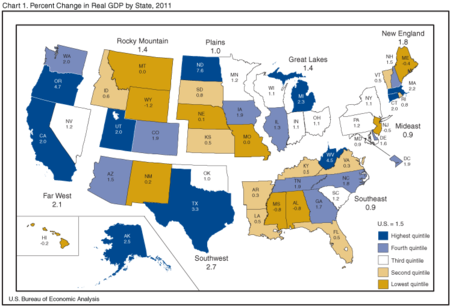My world for Project # 2: World Building Project is called the Scattered States of America. It can be found on Earth in the territory currently known as the United States. Yes, the Scattered States of America is technically the United States, but it is 700 years after 2019 in the year 2719.
In the past 700 years, a lot has changed. In the year 2219, the United States experienced a series of Earthquakes, Landslides, and the largest plate tectonic movement in the history of mankind’s existence. This was known as the Great American Shift. The Great American Shift lasted a long and catastrophic 400 years until the year 2619. As a result, all fifty states of the former United States had been pulled apart and separated by bodies of water; All except the Carolinas. Due to chaotic precautions and adaptations, 400 years after 2219, Americans lost their way of life and former ways. Once the Great American Shift came to an abrupt halt, those who had experienced the chaotic natural disasters had no idea what to do with themselves, so they looked for answers and for those who could give them.
In the Fall of 2619, fifty delegates from each of the Scattered States met and discussed what the first action towards recovery should be. They decided to enact the Scatter Evolutionary Method. This philosophy gave a list of regulations that must be conducted throughout the country in hopes of recovering from The Great American Shift’s negative social and evolutionary impacts. The first regulation was: every American must marry when they turn twenty. The second regulation was: every American must have three children by the age of 35. The third regulation was: all first-born children born on and after January 1st, 2620 must be sent off by at the age of fifteen to the Carolinas for elite educational opportunities. Scientifically speaking, the first-born child possesses the best genetics of their parents. This has been proven through studies, as first-born children have higher test scores, social skills, and leadership qualities. The committee of fifty delegates in the Fall of 2619 hoped that it would be in the country’s best interest to have first-born children serve as Scattered States of America political, economic, and business industrial leaders. The fourth regulation was: all secon d-born children must be sent off to Connecticut, Massachusetts, New Hampshire, or Vermont based on hair color. Blondes go to Connecticut, Brunettes go to Massachusetts, Redheads go to New Hampshire, and those with Black hair go to Vermont. The reason behind this is so the Scattered States of America can be assured that each hair color is still “alive” 400 years later. The fifth regulation was: the third-born child stay home with their family and take care of them when they grow old. The sixth regulation was: every American retires at the age of 68 and must move to Florida. This way, the Scattered States of America can keep track of the elderly and of their needs easily.
d-born children must be sent off to Connecticut, Massachusetts, New Hampshire, or Vermont based on hair color. Blondes go to Connecticut, Brunettes go to Massachusetts, Redheads go to New Hampshire, and those with Black hair go to Vermont. The reason behind this is so the Scattered States of America can be assured that each hair color is still “alive” 400 years later. The fifth regulation was: the third-born child stay home with their family and take care of them when they grow old. The sixth regulation was: every American retires at the age of 68 and must move to Florida. This way, the Scattered States of America can keep track of the elderly and of their needs easily.
On January 1st of 2620, the Scatter Evolutionary Method was set in motion. At first, there was much confusion between the Scattered States Americans, but, with some time, the Scatter Evolutionary Method started to sink in. Now, 99 years later, in 2719, the Scatter Evolutionary Method is the only way of life among the Scattered States of America. The civilization of the method stays intact with every new generation, for they are educated and socially accepting of it from the beginning of childhood. That is why Scatter Evolutionary Method is my Element X. It is relied upon from the recovery of the Great American Shift.
To represent my project, I plan on using either my Microsoft Surface’s Movie Feature or my Mac’s iMovie. For the video, I plan on reciting what I have stated above in a voice over. When I record the voice over, I plan to make sure I am in an appropriate environment where it is silent (no background noise). Throughout the video, I will represent my statements made above through drawings of my own, pictures I find from the internet (and give credit to), and technical tactics. Finally, I will follow my video essay with my sources with proper citation. Overall, I plan to develop an understanding and representation of concepts about world building from class discussion, class presentation, and readings.


